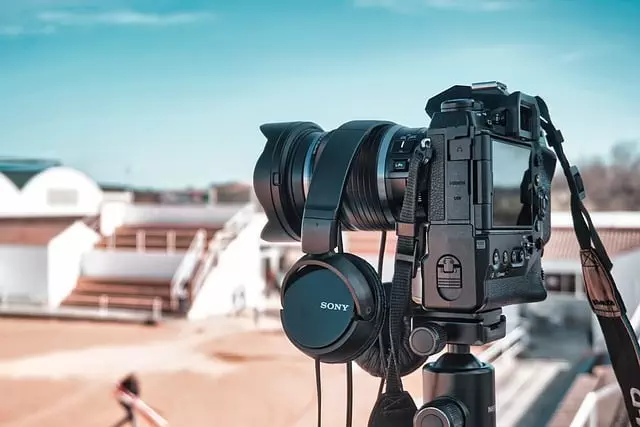DivX is a powerful video compression tool known for balancing visual quality and file size reduction. It achieves this through advanced codecs that employ spatial and temporal compression, predictive coding, motion compensation, and variable bit rate encoding. Converting videos to DivX format using specialized software simplifies the process, enabling significant file size reduction without compromising picture clarity or color accuracy. This makes DivX ideal for streaming, sharing, and storing high-definition videos on devices with limited space, especially with tools that show users How to Convert DivX.
High-Quality Video at a Fraction of the Size: Mastering DivX Compression
Struggling with large video files that consume too much space? Discover the power of DivX, a revolutionary video compression standard that delivers stunning quality while significantly reducing file sizes. This comprehensive guide dives into the intricacies of DivX, teaches you effective optimization techniques, and provides step-by-step instructions for seamless conversions using top-tier software tools. Learn advanced techniques to achieve perfect balance between quality and size – ideal for streaming, sharing, or any situation demanding compact video storage. Master DivX compression today and experience the difference!
# High-Quality Video Compression: Mastering DivX for Smaller File Sizes

High-quality video compression is an art, and DivX has long been a leading tool in this domain. This innovative format allows for significantly reducing video file sizes while preserving exceptional visual quality. The key lies in its advanced compression algorithms that intelligently remove redundant data, ensuring a compact yet rich media experience.
Learning how to convert videos to DivX is straightforward with the right software. By utilizing specialized codecs, you can master the art of squeezing more into smaller files. This process involves sophisticated techniques like spatial and temporal compression, which respectively optimize pixel-by-pixel detail and eliminate unnecessary frame variations. As a result, DivX-compressed videos offer an impressive balance between file size reduction and visual fidelity, making them ideal for streaming, sharing, or storing on devices with limited storage capacity.
Understanding DivX: The Key to Efficient Compression

DivX compression technology has long been recognized for its ability to deliver high-quality video in significantly smaller file sizes. This is achieved through a sophisticated combination of video coding techniques, allowing for efficient data reduction without compromising visual fidelity. The key to DivX’s success lies in its innovative approach to video encoding and decoding processes.
Converting videos to DivX format involves utilizing specialized software that employs advanced algorithms to analyze and compress the video content. This process includes spatial and temporal compression, where similar frames are compressed further, and predictive coding, which reduces redundancy by predicting pixel values from neighboring blocks. By leveraging these techniques, DivX ensures that the final video maintains its quality while drastically reducing its file size, making it an ideal choice for streaming and downloading, especially over slower internet connections.
– An overview of the DivX video compression standard and its advantages.

The DivX video compression standard has long been a favorite among users seeking to balance video quality and file size. This efficient encoding method reduces video dimensions significantly while preserving high-quality visuals, making it ideal for streaming and online content delivery. The key to DivX’s success lies in its advanced algorithms that optimize the compression process, ensuring minimal loss of picture clarity and color accuracy.
Converting videos to DivX format offers several advantages, especially for those looking to share or stream content. It allows users to reduce file sizes dramatically, making it easier to transfer videos over the internet or store them on devices with limited storage space. The process of How to Convert DivX is straightforward, with various software tools available that enable easy conversion, ensuring users can enjoy their high-quality videos without the bulkiness of larger file types.
– How does DivX differ from other formats, and what makes it efficient?

DivX stands out among video formats for its remarkable efficiency in compressing video data while preserving high-quality visuals. Unlike other codecs that might sacrifice detail or introduce artifacts, DivX employs advanced compression techniques to significantly reduce file sizes without noticeable loss in picture quality. This makes it a popular choice for streaming and sharing videos online where bandwidth constraints are common.
The codec’s efficiency is achieved through sophisticated motion compensation and variable bit rate (VBR) encoding. Motion compensation allows DivX to code only the differences between frames, which account for most of the variations in video content. Variable bit rate encoding ensures that more complex scenes with intricate details or fast movement receive higher quality bits while simpler sections get lower-quality coding, resulting in a balanced and optimized file size. Consequently, users can enjoy high-definition videos with smaller file sizes, making it easier to convert and share using How to Convert DivX tools.
High-quality video compression is now achievable with DivX, a powerful format that significantly reduces file sizes without compromising visual integrity. By understanding and utilizing DivX’s unique capabilities, users can easily convert their videos using readily available tools, ensuring smaller file sizes for seamless streaming and sharing. This innovative standard offers a practical solution for content creators and viewers alike, revolutionizing the way we consume media.
